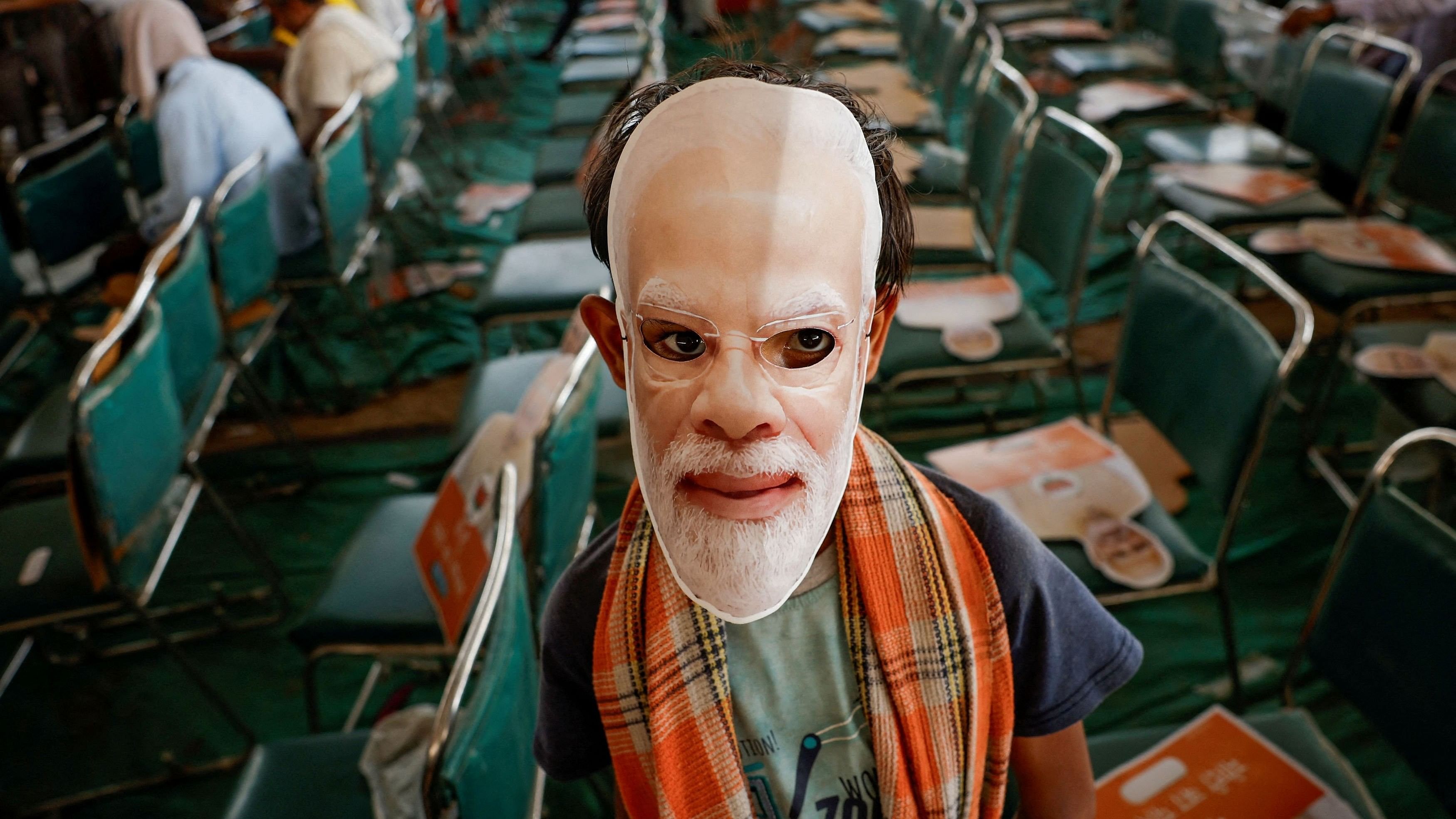
A boy wears a mask depicting India's Prime Minister Narendra Modi during his election campaign rally, in New Delhi, India, May 22, 2024.
Credit: Reuters Photo
By Andy Mukherjee
If the nervousness in the stock market is anything to go by, Prime Minister Narendra Modi’s bid for a third term doesn’t appear to be as secure as it did earlier this year. But regardless of who wins when ballots are counted June 4, the country’s besieged democracy is the biggest loser. And the blame for that falls squarely on the organization responsible for ensuring a free and fair poll: the Election Commission of India.
Conducted over six weeks in seven phases amid a debilitating heat wave, the vote has been the most hate-filled since India held its first general election as an independent republic in 1951-52. Instead of focusing on their own policies, Modi and his Hindu right-wing Bharatiya Janata Party have run a polarizing campaign that — in the process of attacking his political opponents— vilified the Muslim community, India’s largest religious minority.
Despite complaints from Rahul Gandhi’s Congress Party and other opposition groupings, the election commission has done precious little to restrain the prime minister or act decisively on media reports of blatant voter suppression during polling, especially in BJP-controlled Uttar Pradesh, India’s most-populous state. Nor has it released complete polling data, as it did in 2019.
The election has drawn international admiration, the government said in a press release. Delegates from Chile, Georgia, Maldives, Namibia, Papua New Guinea and Uzbekistan witnessed some of the May 7 polling in Uttar Pradesh. They were also taken on a tour of the Taj Mahal.
Behind the veneer of transparency, however, lies near-complete opacity. Civil-society groups have dragged the election watchdog to India’s Supreme Court, which last week asked the commission to answer a simple question: Why can’t it publicly release data on the number of people who have voted?
Considering that all of India’s voting is electronic, this information is readily available. Indeed, it is required to be handed over to the agents of all candidates in each of the country’s 1.2 million polling booths after the last ballots are cast. Why not upload scanned copies of this information, Chief Justice of India DY Chandrachud asked the commission. That way, the votes cast can be crosschecked against the votes counted. The poll body said in its reply Wednesday that public disclosure “may cause confusion in the minds of the voters” when postal ballots are added to the mix. Hearings in the case will continue Friday.
The absolute number of voters has become a crucial issue. Unlike in 2019, the election manager has so far only disclosed percentages. On April 19, the first day of polling, the commission announced that, tentatively, over 60 per cent of eligible electors had voted, without sharing the data behind the calculations. After 10 days of intense pressure from the media and political parties, it released final figures that showed a voting percentage of 66 per cent, with no explanation for the increase. The data for the second phase also showed a similar bump between provisional and final figures. Once again, no absolute figures were provided.
A sprawling geography does pose challenges. Each parliamentary constituency has more than 2,000 polling booths, on average. Late-arriving data from remote stations or re-polls may alter turnout calculations. But a 6 percentage point increase? In response to the Congress Party’s questions, the commission wrote it a letter stating that its voter turnout app was adequately reflecting updated information at all times. The election body also sought to show that polling figures were updated in previous years as well. However, even the data for 2019 show a maximum difference of 3.4 percentage points between same-day figures and a final tally done a few days later.
This time around, the gap between the initial and final estimates amounts to an increase of more than 10 million votes in just the first four rounds. (A fifth phase of voting took place Monday.) Even if you discount the change in turnout calculations as innocuous, what is truly bizarre is the reluctance to share the absolute numbers. In its letter to the Congress Party, the commission said that it was “not legally bound to publish any voter turnout data” for a constituency, state or phase of election. When investigative reporter Poonam Agarwal asked for this data using a right-to-information application, she was told the commission doesn’t have the stats.
None of this inspires confidence. India’s 2024 elections got underway with unanswered questions around electronic voting machines. A Supreme Court bench dismissed civil-society groups’ demand for 100 per cent matching of the paper slips that are briefly shown to voters behind a glass display with the actual votes recorded by the machines. Since then, however, the way the commission has conducted the polls has done little to boost either its own authority, or the credibility of India’s democracy.
The need of the hour is institutional overhaul, starting with staffing and how election commissioners are appointed. But government officials are focused on image management: They have commissioned a local think tank to publish its own democracy ratings after the country’s 2021 demotion to “electoral autocracy” by the V-Dem Institute, an independent research unit at the University of Gothenburg in Sweden.
As Tamil Nadu politician Palanivel Thiaga Rajan wrote recently, “We have not invested enough attention, importance, money, or time into the electoral process that forms the bedrock of a functional democracy.” The 2024 polls have laid bare the consequences of this willful neglect, which must be urgently addressed for a nearly 1 billion-strong electorate to continue to believe that it still has the power of vote over its rulers.